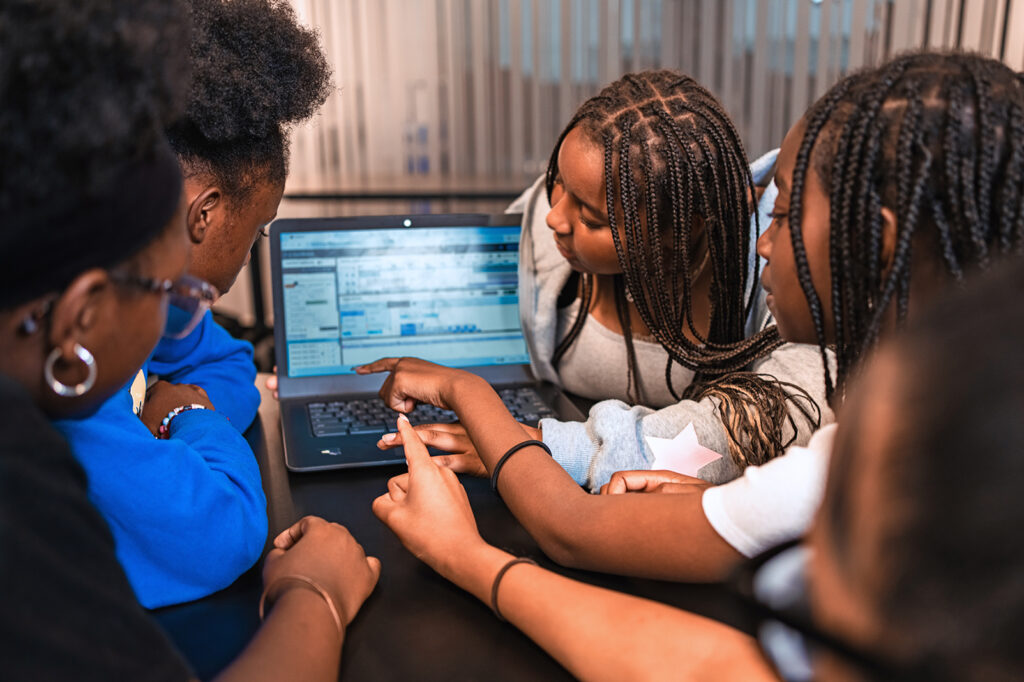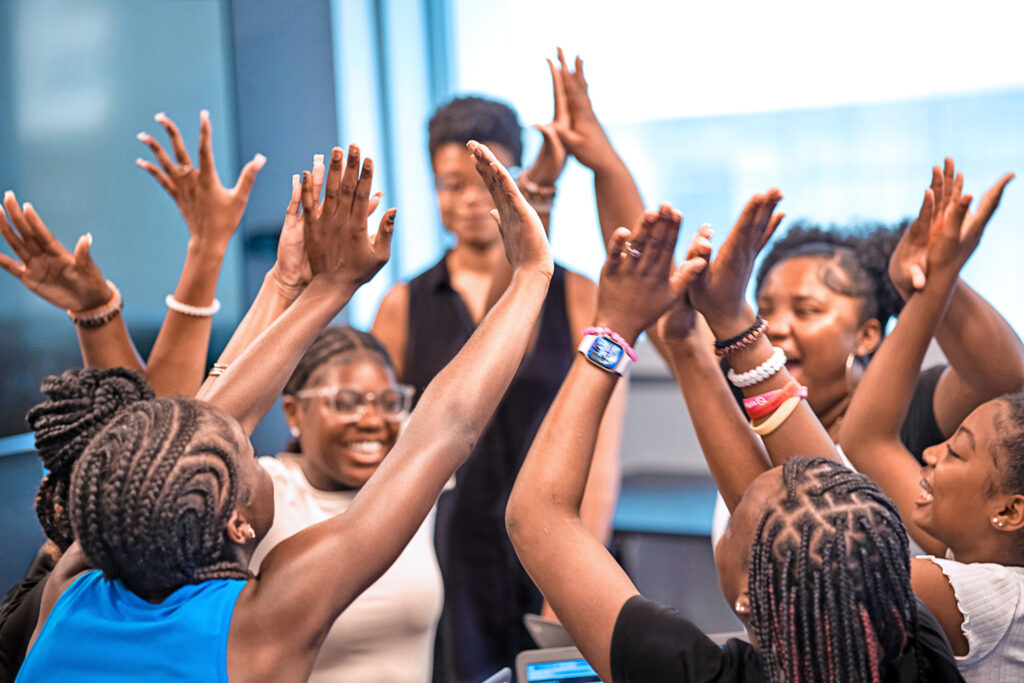Meet Yamilée Toussaint, the MIT Grad Introducing Young Girls to STEM Through Dance
As an engineering student at Massachusetts Institute of Technology, Yamilée Toussaint was sometimes the only Black woman in her class. After she graduated, she decided to change that, and, in 2012, combined her dual passions for science and dancing to create STEM From Dance—an institution based in Brooklyn, New York, with programs across the country.
Toussaint was named a Top 5 CNN Hero in 2024. Dance Teacher spoke with her to learn about her journey of empowering girls in STEM through the power of dance.
Congratulations on your CNN Hero award. How did it feel getting recognized for your hard work?
It was incredible. When I look back to the early days, I remember how difficult it was to get people to believe in the idea of combining dance with STEM (science, technology, engineering, math). Fast-forward 12 years to being on the CNN stage, it was incredibly validating. It’s not just my own journey bringing this idea to life, but what it means for people to think more creatively about the role that dance can play in other domains of life and how to inspire young girls of color to enter STEM fields.
What led you to start STEM From Dance?
It largely came from my own experience being in STEM classrooms, taking physics and calculus and engineering classes, and often being the only Black woman, the only woman of color, or sometimes the only woman. At times, it made me doubt or question if I belonged or if I would be able to make it through to the end. Knowing that that experience wasn’t unique to me, and that it can hold so many others back, made me want to see what I could do to solve the problem.
Did the program take off right away or did you change your original idea as things progressed?
I feel like the entire 12-year journey has been about changing things—even now. But especially in the beginning, it was challenging to figure out how we would integrate dance and STEM. That took several years. The inspiration finally came from pop culture and seeing how popular artists were using technology.
We wanted to re-create that and also use the performance stage as a canvas for integrating STEM and dance. So the girls started making dance performances and creating the circuitry for light-up costumes or using animation. I knew I wanted to do something that resonated with a 10-year-old girl in Brooklyn, New York. And dancing a scientific concept isn’t always the most exciting thing to do, but dancing like Beyoncé is. That was a big turning point for the organization.
Do you see yourself in these young girls?
I definitely see the love for dance. When I was their age, I was just so crazy about dance. I was dancing all the time—at home in my room, in the bathroom, in the kitchen. Dance just brought me so much joy. I definitely can relate to that part, but I also related to having interests beyond dance and wanting to explore those, as well.

STEM From Dance is open to all levels. How do you make sure that everyone feels welcome?
I think it can be easy to overlook the importance of creating a space that feels welcoming and instead just assume “They all like to dance, so they’ll be fine if we just put them in a room together.” At the outset, we create an environment where everybody feels they can enter in. Secondly, it’s important to recognize the power that dance has to create community and a sense of belonging. So we really try to meet them where they’re at. And, finally, the stakes of a performance always creates a level of pressure that can bind a group together.
What has been your biggest challenge throughout the process?
Figuring out how to integrate STEM and dance while creating an experience that not only resonates with girls of color and brings about a change in their lives, but also resonates with a broader audience whom we need to support the work and spread the word. It’s difficult and we didn’t choose the easiest path, which would be a dance-only program, or a STEM-only program, or a leadership program.
Along with dance camp, what else does STEM From Dance offer?
We just started a program called Clubs [which is launching this spring]. Any teacher can go to our website and sign up for a club at no cost. The curriculum is flexible and can be taught at whatever cadence or frequency the teacher desires, like once a week for an hour or every day for 30 minutes. It could last for a few weeks or for the whole school year. We built it to be modular and flexible as our way of bringing STEM From Dance into schools and dance studios and community spaces all over the country.
Our team has gotten much bigger, and we can do more now than [than we did] even over the first 12 years. We have about a dozen full-time staff members and another 20 to 30 part-time facilitators who teach the camp and pop-ups.
I’m so excited about the pace at which STEM From Dance can grow and serve more girls across the country now that we have some wind in our sails.

The post Meet Yamilée Toussaint, the MIT Grad Introducing Young Girls to STEM Through Dance appeared first on Dance Teacher.